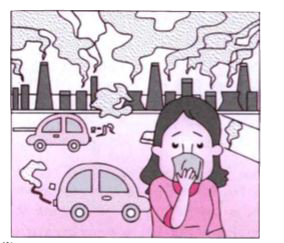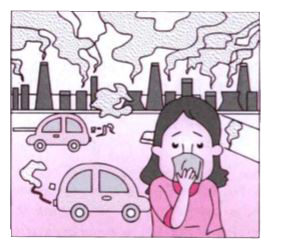Complete Solutions to SECTION-I of chapter SAMPLE PAPER 2018 of Class 10 book with complete answers and questions
| Class 10 | BIOLOGY |
| Chapter | SAMPLE PAPER 2018 |
| GURUKUL | SECTION-I |
| Number Of Questions | 27 |
| Academic Year | 2023-24 |
Differentiate between the following pairs on the basis of what is mentioned in brackets:
The organization which procures and supplies blood during an emergency
View SolutionName the following:
The blood vessel which supplies blood to the liver
View SolutionThe number of chromosomes present in a nerve cell of a human being.
View SolutionName the The layer of the eyeball that forms the transparent cornea.
View SolutionName the following:
The wax-like layer on the epidermis of leaves which reduces transpiration.
View SolutionCopy and complete the following by filling in the blanks 1 to 5 with appropriate words/terms/ phrases:
To test the leaf for starch, the leaf is boiled in water…….(1) It is next boiled in methylated spirit to……(2)The leaf is placed in warm water to soften it. It is then placed in a dish and ......... (3) solution is added. The region, which contains starch, turns...(4)and the region, which does not contain starch, turns ...... (5)
View SolutionMatch the items given in Column A with the most appropriate ones in Column B and rewrite the correct matching pairs .

View SolutionThe statement given below is incorrect. Rewrite the correct statement by changing the underlined words of the statement.
Normal pale yellow colour of the urine is due to the presence of the pigment Melanin.
View SolutionThe statement given below is incorrect. Rewrite the correct statement by changing the underlined words of the statement
The outermost layer of Meninges is Pia mater.
View SolutionThe statement given below is incorrect. Rewrite the correct statement by changing the underlined words of the statement.
The cell sap of root hair is Hypotonic.
View SolutionThe statement given below is incorrect. Rewrite the correct statement by changing the underlined words of the statement
Xylem transports starch from the leaves to all parts of the plant body
View SolutionNitrogen bonds are present between the complementary nitrogenous bases of DNA.
View SolutionChoose between the two options to answer the question specified in the brackets for the following:
An example is illustrated below :
Example : Corolla or Calyx (Which is the outer whorl ?) Answer : Calyx
(i) Blood in the renal artery or renal vein (Which one has more urea ?)
(ii) Perilymph or endolymph (Which one surrounds the organ of Corti ?)
(iii) Lenticels or stomata (Which one remains open always?)
(iv) Sclerotic layer or choroid layer (Which one forms the Iris?)
(v) Blood in the pulmonary artery or pulmonary vein (Which one contains less oxyhaemoglobin?)
View SolutionChoose between the two options to answer the question specified in the brackets for the following:
An example is illustrated below :
Example : Corolla or Calyx (Which is the outer whorl ?) Answer : Calyx
(i) Blood in the renal artery or renal vein (Which one has more urea ?)
(ii) Perilymph or endolymph (Which one surrounds the organ of Corti ?)
(iii) Lenticels or stomata (Which one remains open always?)
(iv) Sclerotic layer or choroid layer (Which one forms the Iris?)
(v) Blood in the pulmonary artery or pulmonary vein (Which one contains less oxyhaemoglobin?)
View SolutionChoose between the two options to answer the question specified in the brackets for the following:
An example is illustrated below :
Example : Corolla or Calyx (Which is the outer whorl ?) Answer : Calyx
(i) Blood in the renal artery or renal vein (Which one has more urea ?)
(ii) Perilymph or endolymph (Which one surrounds the organ of Corti ?)
(iii) Lenticels or stomata (Which one remains open always?)
(iv) Sclerotic layer or choroid layer (Which one forms the Iris?)
(v) Blood in the pulmonary artery or pulmonary vein (Which one contains less oxyhaemoglobin?)
View SolutionChoose between the two options to answer the question specified in the brackets for the following:
An example is illustrated below :
Example : Corolla or Calyx (Which is the outer whorl ?) Answer : Calyx
(i) Blood in the renal artery or renal vein (Which one has more urea ?)
(ii) Perilymph or endolymph (Which one surrounds the organ of Corti ?)
(iii) Lenticels or stomata (Which one remains open always?)
(iv) Sclerotic layer or choroid layer (Which one forms the Iris?)
(v) Blood in the pulmonary artery or pulmonary vein (Which one contains less oxyhaemoglobin?)
View SolutionChoose between the two options to answer the question specified in the brackets for the following:
An example is illustrated below :
Example : Corolla or Calyx (Which is the outer whorl ?) Answer : Calyx
(i) Blood in the renal artery or renal vein (Which one has more urea ?)
(ii) Perilymph or endolymph (Which one surrounds the organ of Corti ?)
(iii) Lenticels or stomata (Which one remains open always?)
(iv) Sclerotic layer or choroid layer (Which one forms the Iris?)
(v) Blood in the pulmonary artery or pulmonary vein (Which one contains less oxyhaemoglobin?)
View SolutionGiven below is a representation of a kind of pollution. Study the same and answer the questions that follow :

(i) Name the kind of pollution.
(ii) List any three common sources of this pollution
(iii) Mention three harmful effects of this pollution on human health.
(iv) Explain the term 'Pollutant'.
(v) Name two soil pollutants.
View SolutionGiven below is a representation of a kind of pollution. Study the same and answer the questions that follow :

(i) Name the kind of pollution.
(ii) List any three common sources of this pollution
(iii) Mention three harmful effects of this pollution on human health.
(iv) Explain the term 'Pollutant'.
(v) Name two soil pollutants.
View SolutionGiven below is a representation of a type of pollution. Study the picture and answer the question :

How does this pollution affect human health ?
View SolutionGiven below is a representation of a type of pollution. Study the picture and answer the question :

Write one measure to reduce this pollution.
View SolutionGiven below is a representation of a type of pollution. Study the picture and answer the question :

State one gaseous compound that leads to the depletion of the ozone layer and creates 'Ozone holes'.
View SolutionFind the odd term out.
Detergents, X-rays, sewage, oil spills.
View SolutionChoose the ODD one out from the following terms given and name the CATEGORY to which the others belong:
Example : Nose, Tongue, Arm, Eye. Answer :
Odd Term - Arm, Category - Sense organs
Lumen, muscular tissue, connective tissue, pericardium.
View SolutionChoose the odd one out of the following set of terms given and name the category to which the others belong:
(i) Phosphate, RNA, Sugar, Nitrogenous base.
(ii) Urethra, uterus, urinary bladder, ureter.
(iii) Cyton, Photon, Axon, Dendron.
(iv) Haemoglobin, glucagon, iodopsin, rhodopsin.
(v) Dendrites, Medullary Sheath, Axon, Spinal cord.
View SolutionChoose the ODD one out from the following terms given and name the CATEGORY to which the others belong:
Example : Nose, Tongue, Arm, Eye. Answer :
Odd Term - Arm, Category - Sense organs
Centrosome, Cell wall, Cell membrane, Large vacuoles.
View SolutionFind the odd one out and name the category :
Prostate gland, Cowper's gland, seminal vesicle, seminiferous tubules.
View Solution
SECTION-I questions and complete solutions for chapter SAMPLE PAPER 2018 of EVERGREEN BIOLOGY (ENGLISH) of Class 10